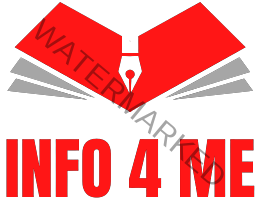Like people, the online world can be classified into generations. To understand NFTs and web 3.0, let us begin from the starting.
Web evolution from 1.0 to 3.0
Web 1.0 is the primary generation of the web, the earliest form of the online world. It is rightly referred to as a read-only web. It permitted users to search for information and read it. There were no comment areas or platforms to air views or share opinions.
 The same way web 3.0 is causing a stir in the online world today, web 2.0 broke the online world when it emerged in 2004. Web, 20, highlights user-generated content and participatory culture on the web and it is presently the internet we are using. Also known as the “web 2.0” or “social web” involves a number of platforms and tools where people can share their opinions, activities, and perspectives.
The same way web 3.0 is causing a stir in the online world today, web 2.0 broke the online world when it emerged in 2004. Web, 20, highlights user-generated content and participatory culture on the web and it is presently the internet we are using. Also known as the “web 2.0” or “social web” involves a number of platforms and tools where people can share their opinions, activities, and perspectives.
Web 3.0 is explained as “read-write execute”. Like web 2.0, web 3.0 wants to make the online world more inclusive but take control away from big corporations, like Amazon, Google, and Meta. It will operate via the founding blocks of cryptocurrency and blockchain technology.
NFT in web 3.0

Also called as Non-Fungible Tokens, this special idea was first heard of it in. it is a special twist to the traditional way of owning digital properties. NFTs use the block ledger and have seen a rise in status within the collectible and art domain.
Anyway, the potential use of NFTs is way beyond digital artwork. They can also be used for buying digital lands in the virtual globe, such as Metaverse, NTFS also serves as a remarkable choice for next-generation digital music ownership, licensing, and publishing.
Some observers do view a scalable future with NFTs as a medium that provides buyers access to restricted-edition products or unique sales. There is potential for NFTs to be used as concert tickets or to log into an internet video game. All this and more can happen in the online world using NFTs in the future.
The future of NFTs and web 3.0
A famous American brand “Nike” has already started working on the app and expansion of the use of NFTs.
Given that web 3.0 serves as a write, read, and interacts website platform, the applications are limitless. Web 3.0 houses many layers of technical innovation that contain aspects such as:
- Edge computing
- Decentralization
- Blockchain
- Artificial intelligence
- Machine learning
Edge computing has taken charge of the improvement of web 3.0 and has been implemented in most data centers. This is complemented by the complication of the latest computing specs that are distributed among sensors, notebooks, appliances, phones, and cars. This can help produce and consume about 160 times the data being produced today by the 2025 year.

Data privacy with web 3.0
Given that web 3.0 would mostly trust decentralization, it advises that users would fully own the data produced by them. This helps users or data generations trade/sell the data without having to lose ownership, risking privacy, or even replying or intermediaries. Additionally, it helps permit users to securely log in without being tracked in any manner.
Decentralized apps
When you use cloud-based services like Google documents, you are using a centralized application. Google has access to all the detail in your documents, can read them all, and control them. The trade-off is that we can store our information in the cloud, simply collaborate with others, and enjoy a big list of other cloud-app conveniences.
But what if you could have the benefits of these cloud services without submitting to a central authority? That is where “dApps” or decentralized apps come into the picture. Most apps use the Ethereum blockchain for their internet computation so that computation is paid for using Ethereum gas fees.
Machine learning and artificial intelligence
Smartphones are packed with these latest technologies, which is how applications like Apple Siri work. Thanks to NLP, you can speak to an intelligent agent, and they can parse what you are asking for.
Machine learning is used to process big amounts of data in true time to guess our behavior and needs. Thanks to the Internet of Things (IoT), we have clever network-linked gadgets anywhere. This creates many chances to gather data and make something best from it.
Decentralized autonomous organizations (DAOs)
An organization, like a charity or business, has a centralized structure. There is a control and command from management and executives at every level to coordinate all the different people who contribute to the job that has to be done.
The organization rules are encoded using creative contract technology in a permissionless blockchain. There is no need for hard and costly administrative departments that traditional organizations have made to keep everything going. DAOs also make it virtually not possible to commit fraud since every transaction and its history is open to public scrutiny.








GIPHY App Key not set. Please check settings